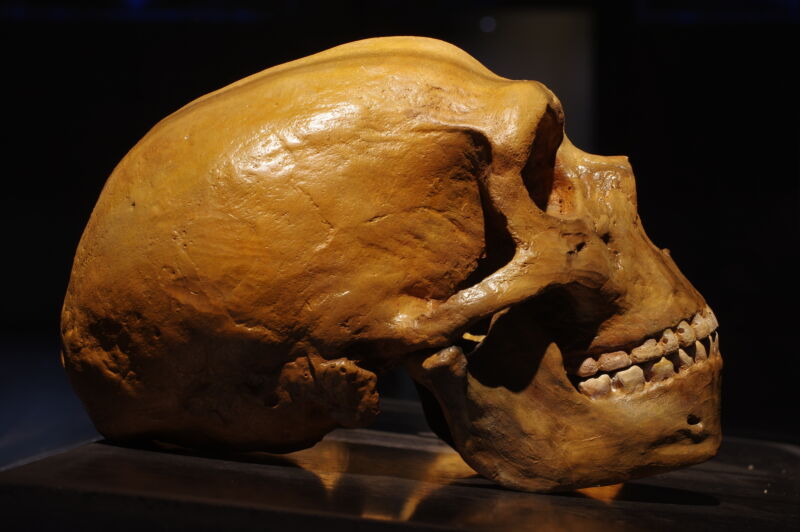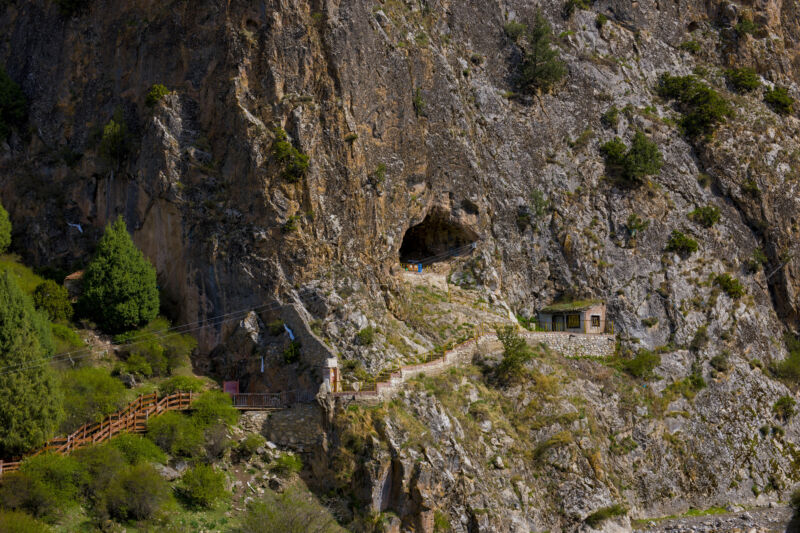Much of Neanderthal genetic diversity came from modern humans

The basic outline of the interactions between modern humans and Neanderthals is now well established. The two came in contact as modern humans began their major expansion out of Africa, which occurred roughly 60,000 years ago. Humans picked up some Neanderthal DNA through interbreeding, while the Neanderthal population, always fairly small, was swept away by the waves of new arrivals.
But there are some aspects of this big-picture view that don't entirely line up with the data. While it nicely explains the fact that Neanderthal sequences are far more common in non-African populations, it doesn't account for the fact that every African population we've looked at has some DNA that matches up with Neanderthal DNA.
A study published on Thursday argues that much of this match came about because an early modern human population also left Africa and interbred with Neanderthals. But in this case, the result was to introduce modern human DNA to the Neanderthal population. The study shows that this DNA accounts for a lot of Neanderthals' genetic diversity, suggesting that their population was even smaller than earlier estimates had suggested.
